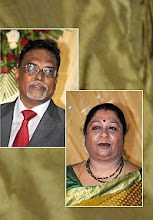1640- CASTE SYSTEM IN INDIA(II):
About untouchability:
(1)Dalit [(Panchamas("fifth varna"), and Asprushya ("untouchables")]
Dalit is a designation for a group of people traditionally regarded as untouchable.Dalits are a mixed population, consisting of numerous social groups from all over India; they speak a variety of languages and practice a multitude of religions. The term Dalit has been interchangeably used with term Scheduled Castes, and Scheduled Tribes these terms include all historically discriminated communities of India out-caste and Untouchables.
(2)Dalit population
In 2011, the proportion of Dalit population was 24.4 percent of India's total population. In 2011, the state of Punjab had the highest proportion of its population as Dalit, at about 31.9 percent, and the state of Mizoram had the lowest at nearly zero. The government of India recognises and protects them asScheduled Castes (SC) and Scheduled Tribes(ST).
(3)Dalit status in the society
In the context of traditional Hindu society, Dalit status has often been historically associated with occupations regarded as ritually impure, such as any involving leatherwork, butchering, or removal of rubbish, animal carcasses, and waste. Dalits worked as manual labourers cleaning streets, latrines, and sewers.Engaging in these activities was considered to be polluting to the individual, and this pollution was considered contagious. As a result, Dalits were commonly segregated, and banned from full participation in Hindu social life. For example, they could not enter a temple or a school, and were required to stay outside the village. Elaborate precautions were sometimes observed to prevent incidental contact between Dalits and other castes.Discrimination against Dalits still exists in rural areas in the private sphere, in everyday matters such as access to eating places, schools, temples and water sources.It has largely disappeared in urban areas and in the public sphere.
(4) The Prevention of Atrocities Act (POA)
It is a tacit acknowledgement by the Indian government that caste relations are defined by violence, both incidental and systemic. In 1989, the Government of India passed the Prevention of Atrocities Act (POA), which clarified specific crimes against Scheduled Castes and Scheduled Tribes (the Dalits) as "atrocities", and created strategies and punishments to counter these acts. The purpose of The Act was to curb and punish violence against Dalits.
Firstly, it clarified what the atrocities were: both particular incidents of harm and humiliation, such as the forced consumption of noxious substances, and systemic violence still faced by many Dalits, especially in rural areas. Such systemic violence includes forced labour, denial of access to water and other public amenities, and sexual abuse of Dalit women.
Secondly, the Act created Special Courts to try cases registered under the POA.
Thirdly, the Act called on states with high levels of caste violence (said to be "atrocity-prone") to appoint qualified officers to monitor and maintain law and order. The POA gave legal redress to Dalits, but only two states have created separate Special Courts in accordance with the law. In practice the Act has suffered from a near-complete failure in implementation. Policemen have displayed a consistent unwillingness to register offences under the act. This reluctance stems partially from ignorance and also from peer protection. According to a 1999 study, nearly a quarter of those government officials charged with enforcing the Act are unaware of its existence.
(5)Before India's independence
in 1932, theBritish Raj recommended separate electorates for Dalits in the Communal Award. However Mohandas Gandhi opposed it; negotiations resulted in the Poona Pactwith B. R. Ambedkar. Since its independencein 1947, India has implemented an affirmative policy of reservation, the scope of which was further expanded in 1974, to set aside and provide jobs and education opportunities to Dalits.
While discrimination based on caste has been prohibited and untouchability abolished under the Constitution of India, discrimination and prejudice against Dalits still remains.
(6)Modern India
Since 1950, India has enacted and implemented many laws and social initiatives to protect and improve the socio-economic conditions of its Dalit population. To prevent untouchable act and other criminal acts on Scheduled Castes (SC) and Scheduled Tribes (ST) Indian government commencedPrevention of Atrocity (POA) act . By 1995, of all jobs in India, 17.2 percent of the jobs were held by Dalits, greater than their proportion in Indian population. Of the highest paying, senior most jobs in government agencies and government controlled enterprises, over 10 percent of all highest paying jobs were held by members of the Dalit community, a tenfold increase in 40 years. Babu Jagjivan Ram was the first Dalit to hold the post of Deputy Prime Minister of India from 24 March 1977 to 28 July 1979. In 1997, India democratically elected K. R. Narayanan, a Dalit, as the nation's President. In India's most populous state, Uttar Pradesh, Dalits have revolutionised politics and have elected a popular Dalit chief minister Mayawati. In the last 15 years, Indians born in historically discriminated minority castes have been elected to its highest judicial and political offices. The quality of life of Dalit population in India, in 2001, in terms of metrics such as access to health care, life expectancy, education attainability, access to drinking water, housing, etc. was statistically similar to overall population of modern India.


0 Comments:
Post a Comment
<< Home